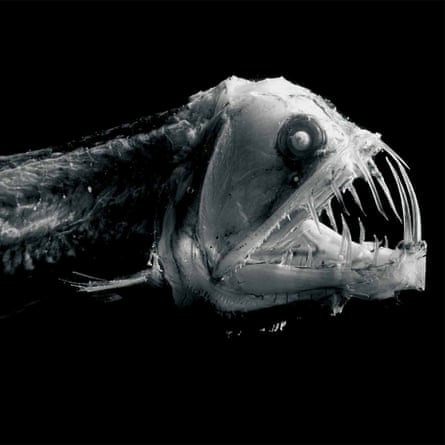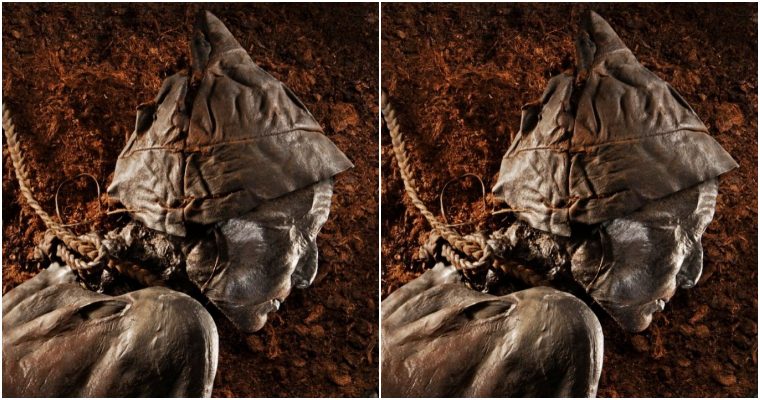The charismatic deepsea viperfish has teeth which interlock forming a razor-sharp, glassy cage to trap prey

The deep sea viperfish is about 30cm long and a formidable predator. Photograph: mauritius images GmbH/Alamy
Deep-sea viperfish have razor-sharp fangs so big they don’t fit inside their mouth, but they interlock in front of their jaws forming an inescapable, glassy cage. “When people think of deep sea fishes, the viperfish is one of the first things that comes into their mind,” says Yi-Kai Tea, a fish expert from the Australian Museum in Sydney. “They’re very charismatic, very iconic.”
Tea found a Sloane’s viperfish (Chauliodus sloani) on a research expedition that recently returned from the remote waters of the Indian Ocean around the islands of Cocos (Keeling). This species is relatively common in open waters of the twilight zone, between about 500 and 1,000 metres down, so it was a surprise to find this one in the trawl net that Tea and his team were using to sample animal life closer to the seabed.

The viperfish’s teeth form a trap for prey and are very difficult to see. Photograph: Museum Victoria
The viperfish’s splendid teeth not only form a trap for prey, but they’re very difficult to see. “Having really transparent, big teeth, allows you to conceal something that is otherwise very obvious and very evident,” says Tea.
A few years ago, a study of a closely related species of deep-sea fish, the shiny loosejaw (Aristostomias scintillans), uncovered the secret of their see-through teeth. They’re made of enamel and dentine, the same substances as human teeth.
The intricate nanostructure of their teeth scatters very little light and instead lets it pass straight through. This means the fish’s teeth don’t twinkle in the bioluminescent lights made by so many animals in the deep sea.
Along with other members of their family, the Stomiidae, including dragonfish, stareaters and loosejaws, viperfish have another trick that helps make them even more formidable predators of the deep. Their jaws aren’t fixed firmly in place but are loosely held together with ligaments and cartilage, allowing them to be slung open very widely.
They also don’t have stiff vertebrae at the back of their skulls. “Imagine having a neck with no bone,” says Tea. “If you bend your neck really far back, and your jaw extends really far forward, you end up having these enormous gapes that are otherwise quite impossible.”
This family of fish is incredibly well adapted for life in the deep sea. “They’ve just managed to diversify really well,” says Tea. One member of the family, the stoplight loosejaw, can unusually produce and detect red light.
As sunlight seeps into the ocean it gets very quickly absorbed by the water, so most deep-sea species have lost the ability to see red. By shining their own red light through the dark, the stoplight loosejaw has evolved a private wavelength. “It’s using this invisible torch to look for things that don’t see it coming,” says Tea.
Catching a viperfish and seeing one in person reveals something that’s otherwise not immediately obvious. “They look really fearsome in photos, but in life they’re no longer than a standard 15cm ruler,” says Tea. Even so, these little fish are supreme predators, he says. “They are the masters of their realm.”







